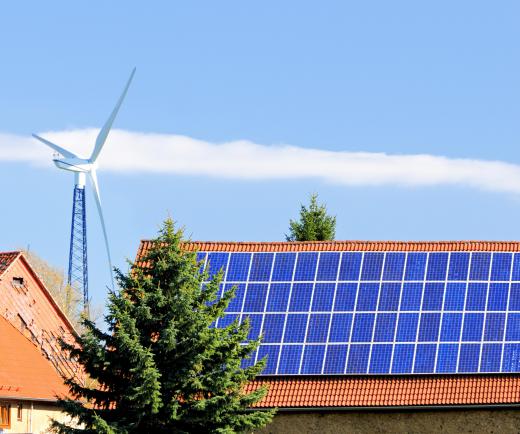What is Renewable Heat?
Renewable heat refers to any heating system that is powered by a source of renewable energy. Wood, biodiesel, geothermal, and solar radiation are all renewable sources of energy that can be used to generate heat. Renewable energy is generally defined as any energy source that can be replaced with the span of a human lifetime. Wood, for example, can be replaced within a decade or two, depending on the type of tree harvested.
Wood is possibly the oldest form of renewable heat and can be used to power a wood-burning furnace or a woodstove. Woodstoves often offer several benefits over a wood-burning furnace, such as a lower initial cost, better efficiency, and lower carbon emissions. The two major disadvantages of woodstoves are the mess involved with operation and the fact that they are best suited for open floor plans. Furnaces; however, are not kept in the main living area and are better suited for heating multiple rooms.

Biodiesel is often associated with transportation vehicles, but it can easily be used to generate renewable heat when used in an oil-fired furnace or boiler. Biodiesel is often referred to as "biofuel" or "bioheat" when used in this manner. The major advantage of this energy source is that usually no special equipment or expensive modifications are required for oil-based systems to use biodiesel. Existing systems can also use biodiesel exclusively or as a supplement to reduce carbon emissions.

Geothermal systems bury liquid-filled coils at a depth where the temperature of the earth is consistent, usually near 75 degrees. The fluid rotates through the coils and gets warmer before being circulated back through a heat exchange chamber. Once in the chamber, the coils release heat to the surrounding air, which is then blown in to the building structure. Geothermal energy is such a reliable form of renewable heat that it is often the only heating system used in many new, and very large, constructions.
Solar panels have been used for several decades to supplement traditional electrical systems. New solar systems, however, use green architecture designs to collect, absorb, and circulate heat from solar radiation. Liquid systems are often used with radiant heat, which supplies warmth directly to the home’s flooring or panels in the walls or ceilings. Solar collectors can be used to directly heat the air in a room or in conjunction with a heat pump.
New methods of insulation, often referred to in the green building industry as “superinsulation,” are often used in conjunction with renewable heat systems. Superinsulated structures are required to have a thermal insulation gradient nearly twice that which is required by local building codes. This technique uses double walls, continuous air and vapor barriers on all window and door seals, and traditional fiberglass insulation. Renewable insulation materials are also made from recycled denim, wood, and cellulose for those not wanting to use fiberglass materials.
AS FEATURED ON:
AS FEATURED ON:












Discussion Comments
@Feryll - I don't agree that governments should be responsible for getting people to use renewable energy. If the renewable heat is better than burning fossil fuels for heat then people will figure that out. If you don't want to pay the extra money for solar panels then it is not the government's responsibility to pay you so you will change your mind.
@Feryll - The U.K. is not the only country where people can get financial breaks for using renewable energy. For example, in the U.S. you can get rebates or tax breaks for installing solar energy panel systems in your home. These rebates and tax breaks make the starting costs more bearable.
I think getting people to use these renewable energy sources mentioned in the article would be relatively easy if governments would reward the people who use them. I don't know the specifics, but I have read about a plan in the United Kingdom where the government pays people who generate and use renewable energy.
One of the biggest drawbacks with solar energy is that solar energy heating and powering systems are so expensive to get off the ground. Getting people to spend all of that money up front is hard even when you tell them they will actually be saving money once the solar system is up and running. I think governments around the world should take a page from the book they are using in the U.K.
Post your comments